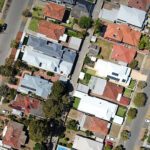New Curtin research has used archived aerial photographs taken over seven decades to map and monitor the health of coral reef structures at Bill’s Bay on the Coral Coast in Western Australia’s far north.
Researchers scoured the archives of both WA’s Department of Transport and Landgate databases for aerial photographs of coral reefs at the Bill’s Bay site, finding images dated 1949, 1969, 1982, 1986, 1990, 1999, 2002, 2010 and 2017. They were then able to use these images to accurately chart the changes in coral reef structure over time, finding the coverage of reef structure had increased despite frequent natural disturbances and increased human activities in the area.
Lead researcher Tahlia Newnham, from the School of Molecular and Life Sciences at Curtin University, said the findings mark an exciting addition to traditional long-term coral reef monitoring.
“This rare aerial photograph archive has captured changes to coral communities at Bill’s Bay at a temporal and spatial scale that goes far beyond the scope of traditional in-water assessments,” Ms Newnham said.
“As such we were able to assess how coral structures at Bill’s Bay have changed over multiple decades in response to disturbances such as coral bleaching and cyclones, and look at how changes to geomorphological processes, like sediment transport, have impacted the bay.
“We found that despite a significant loss in live coral cover in 1989 following a hypoxia event induced by coral spawning, reef structure in Bill’s Bay increased from 11 to 41 per cent between 1949 and 2017. Reef growth was most prominent along the south-western edge of the bay, possibly due to a decline in sediment transport into the bay and, as such, an increase in the availability of hard substrate for coral recruitment.”
Co-author Dr Nicola Browne, a coral ecologist also from Curtin’s School of Molecular and Life Sciences, said this kind of aerial mapping spanning decades provides new insights into reef health and the way it is monitored.
“These historical photographs provided the team with a detailed, bird’s eye view of reef structure cover at regular intervals over a 70 year period. By comparing the reef structure visible in these images to live coral cover records we could better understand how long-term changes to what we could see from above compare to in-water assessments of coral health,” Dr Browne said.
“Our study shows that archival aerial images can be used to show changes to coral reefs from ‘pre-disturbance’ baselines, allowing the long-term effects of natural disturbances and human induced impacts on these important natural ecosystems to be more accurately assessed.”
The paper, ‘Coral Reefs: Long-term (70 year) monitoring of reef structure through high resolution multidecadal aerial imagery’, is published in Coral Reefs and is available online here.



